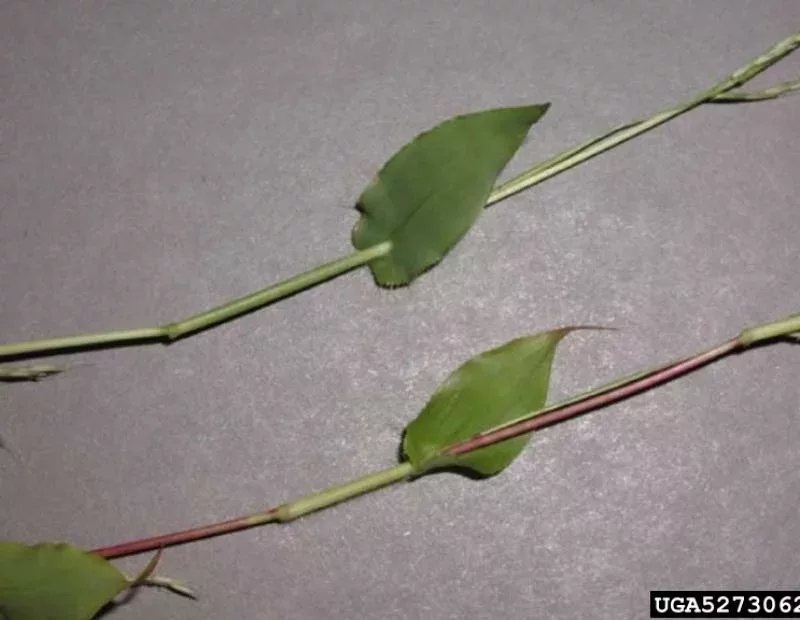
Small carpet grass is a member of the Grass family (Poaceae).
A low-growing, sprawling annual grass, small carpet grass grows up to one and a half feet in height. Stems root at nodes and have bright green clasping leaves which are often sparsely hairy on the margins. During flowering, small carpet grass produces a several fingered inflorescence with up to 10 flowering spikes. (2)
Leaves
Leaves are rather short and broad, up to approximately 3 inches in length, variably hairy to glabrous on undulating margins, with acute tips. Leaves encircle and clasp the stem. (2)
Flowers
Flowers are arranged in a ‘digitate’ inflorescence with up to 10 fingers, emerging towards the end of the summer. Individual flowers can be greenish to purple.

It is unclear when or how small carpet grass arrived in North America, however, its patchy distribution suggests several different accidental introductions occurred as early as the end of the 19th century. The species is now extant in at least 25 states. (1)

Small carpet grass prefers moist soils in well-lit areas. It is commonly found in riparian areas, around ponds and lakes, in wet meadows, or any open, moist disturbed area. (2)
As an annual, small carpet grass produces copious amounts of seed each year. The species also reproduces vegetatively, rooting at nodes. (6) Vectors include wind, water and human activity. (2)

Biological Control
There is no biological control agent available at this time.
Manual or Mechanical Control
Pulling / Digging Up: Hand pulling is an effective control method for small carpet grass, if management is completed prior to fruit set. (6)
Mowing: Mowing and other forms of cutting will control small carpet grass if management is completed at flowering onset, and not earlier. (6)
Girdling: Not applicable
Prescribed Fire: No information available
Prescribed Grazing: No information available
Soil Tilling: No information available
Mulching: No information available
Solarization: No information available
Hot Foam Spray: No information available
Chemical Control
The pesticide application rates and usage herein are recommendations based on research and interviews with land managers. When considering the use of pesticides, it is your responsibility to fully understand the laws, regulations and best practices required to apply pesticides in a responsible manner. At times, the pest you seek to treat may not be on a pesticide label, requiring a 2ee exemption from NYSDEC. Always thoroughly read the label of any pesticide and consult the NYSDEC or a licensed pesticide applicator with questions.
Foliar Spray: A 3% foliar spray of glyphosate or 0.38% foliar spray of Quizalofop is effective against small carpet grass. Repeat applications may be necessary. (7)
Cut Stump: Not applicable
Basal Bark: Not applicable
Stem Injection: Not applicable
Pre-Emergent Spray: No information available
As with any other invasive infestation complex, small carpet grass is best managed via a combination of mechanical and chemical means. Very small populations may be effectively controlled by careful hand pulling prior to seed set. Larger populations may warrant foliar spray application, or carefully timed mowing/weed whacking. All managed infestations should be monitored for at least a year to manage any germination of new seedlings that occurs. New seedlings can be hand pulled or sprayed.
Post treatment monitoring
Controlled populations should be revisited for at least one subsequent year to ensure no germination of new seedlings has occurred.
Disposal Methods
Pulled small carpet grass can be composted so long as management occurred prior to flowering.
